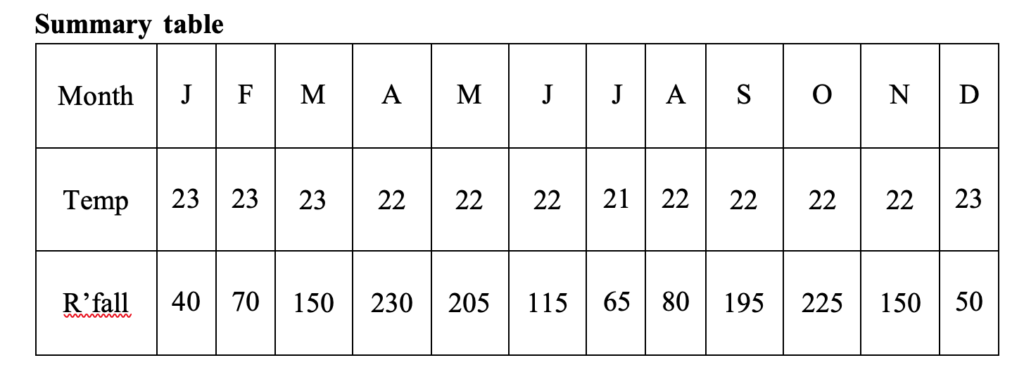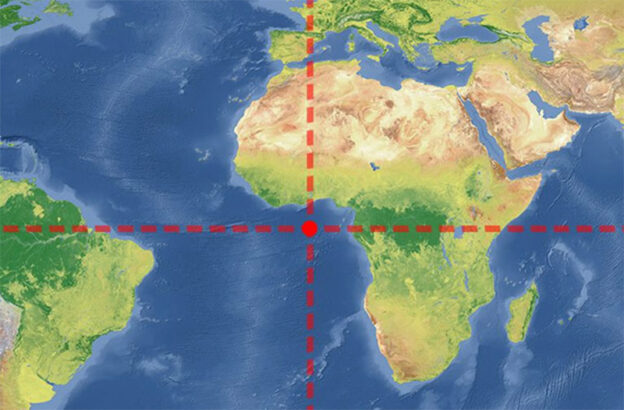Climate Of Africa – Part 2
Climate types
As noted earlier, Africa experiences a variety of climatic patterns stretching from the north through the central to the south and from the west to the east.
Equatorial climate
This is experienced between 0° to 5° south and north of the equator particularly in the western part of Africa e.g. Nigeria, DRC, Cameroon, Gabon, Central African Republic, etc. As for East Africa, it receives modified equatorial climate influenced by the mountains and highlands.

Characteristics
• Receives rainfall throughout the year
• Has two rainfall peaks between March to May and September to November
• Rainfall totals range from 1500 mm and above
• Rainfall is convectional in nature due to hot temperatures causing evapo-transpiration
• Temperatures are relatively hot ranging between 21°C and 23°C evenly distributed throughout the year
• It has a small annual temperature range of approximately 2°C (23°C- 21°C=2°C)
• Experiences high humidity due to abundant vapour being discharged in the atmosphere throughout the year
Economic activities
• Agriculture e.g. cocoa in Ghana, palm oil in Nigeria, rubber in Liberia, sugarcane and banana in DRC due to heavy rainfall.
• Fishing e.g. river Congo in DRC, river Niger in Nigeria, etc due to heavy rainfall that fills the water bodies.
• Forestry and forest conservation in Cameroon, DRC and Gabon due to the rain that support tree growth
• Lumbering due to abundant flora e.g. in Gabon, DRC, etc
• Tourism due to abundant fauna and flora
• Wildlife conservation due to abundant fauna and flora
• Mining of oil in Nigeria, gold and uranium in DRC, etc
• Educational research and study in botany, zoology, etc
• Hunting of wild game in the forests.
Likely problems
• Pests, disease vectors and man eaters
• Seasonal flooding due to heavy rains
• Difficulty in construction of transport and communication networks due to dense vegetation diverse drainage and heavy rainfall.
• Landslides, mud flows and rock fall in mountainous areas due to water infiltration coupled with gravitational pull
• Soil erosion on steep slopes and plains with bare ground
• Soil infertility caused by leaching where soil nutrients are dissolved vertically and horizontally

